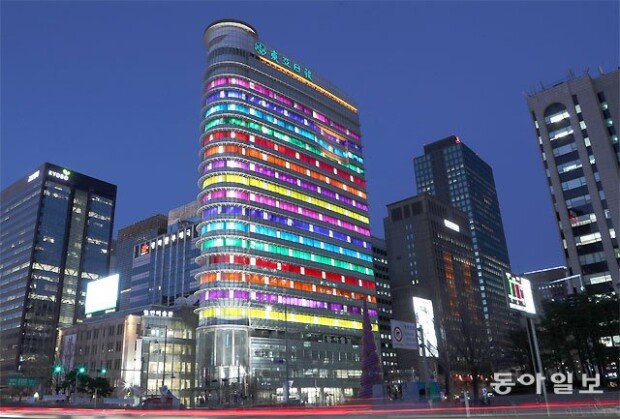Why people are drawn to coloring books
Why people are drawn to coloring books
Posted April. 13, 2019 07:52,
Updated April. 13, 2019 07:52

An office worker surnamed Kim, 25, is obsessed with so-called “pipo painting” these days. It refers to coloring books for adults in which they can color the sketches of famous paintings or characters with oil paint. “I find myself absorbed in pipo painting after I came home after work during weekdays or on weekends,” Kim said. “I feel more active when I’m using bright, lively colors.”
It seems we are living in an era of color. Nearly half of the top 10 best-sellers in arts at South Korea’s Kyobo Book Center are coloring books, and they now come with various materials including colored pencils, crayons, watercolors, oil colors, and even stickers. User can easily follow the instructions to color the underdrawings. In addition, coloring applications for smartphones or tablet PCs are also becoming popular. Some YouTube videos even feature creators working on coloring books.
Such coloring contents mostly provide users with diverse colors. French artist Daniel Buren’s colorful work recently installed at the exterior of the Dong-A Media Center is also gaining attention. Another office worker named Lee Sang-hee, 24, says that she opens a coloring application in the smartphone whenever she wants to relax. “I take pleasure in using a variety of colors, as I need at least seven colors to complete a painting. This may look childish, but I don’t care because it’s not something I’d show others but what I do at home,” Lee said. “There are so many things I can’t control in my daily life, so I take comfort in using colors as I like.”
Why are people drawn to coloring books? Kim Sun-hyun, professor of the Department of Art Therapy at Cha University, explained that people living a busy life tend to use coloring products to relieve stress and get the sense of vicarious satisfaction.
“People unconsciously respond to and are influenced by colors. Looking at colorful flowers can make people feel better when they’re tired and annoyed,” the professor said. “This means that colors affect a person’s emotions and feelings.”
Jee-Young Kim kimjy@donga.com







